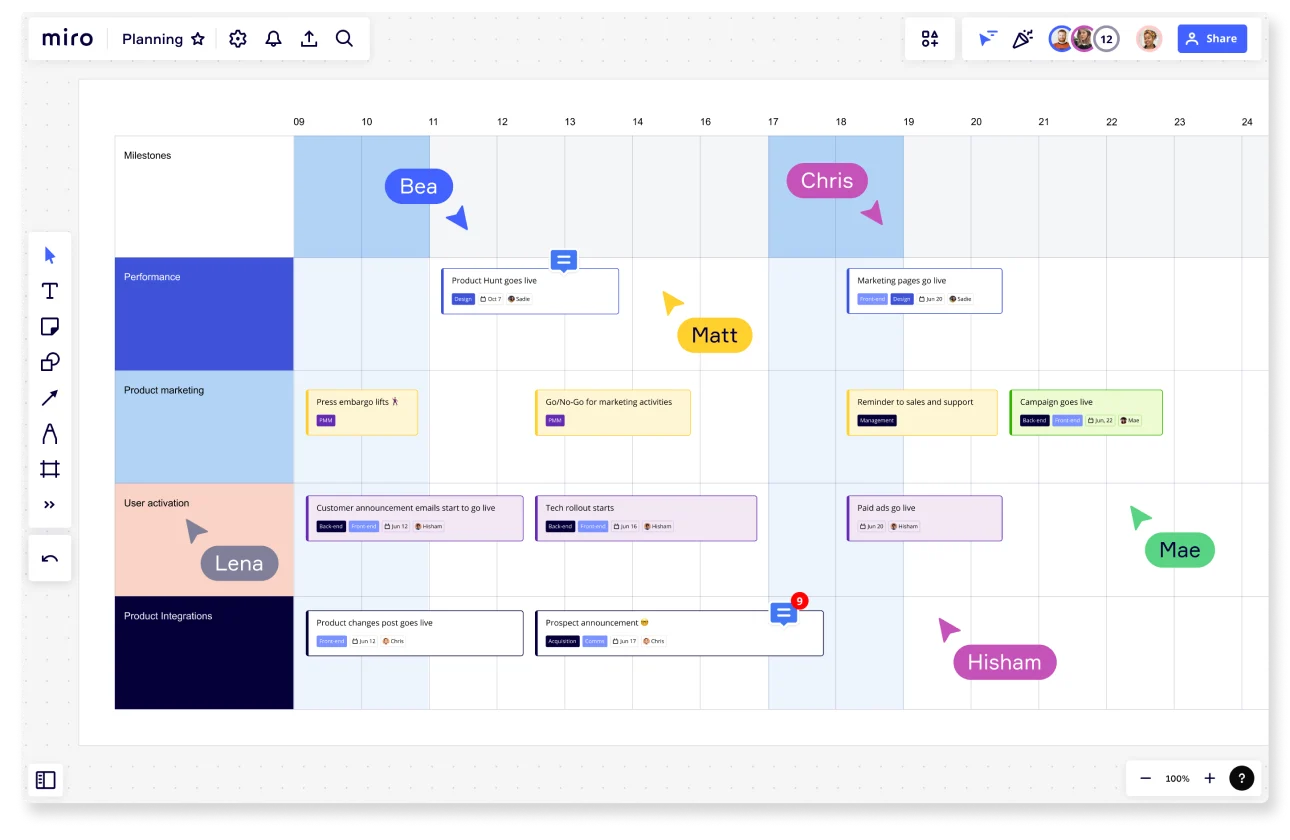
How to create a culture of innovation

How to innovate: A short intro
Innovation is a key factor in the success of any business. But how can you create a culture of innovation in the workplace? It's not as hard as it may seem. In this article, we'll explore what innovation is, why it's important, and how you can use Miro to bring it to your workplace. We'll also discuss the next steps for keeping innovation going. So get ready to learn how to create a culture of innovation in the workplace.
What's innovation, and why is it important?
Innovation is the process of introducing new and improved ideas, methods, products, or services to the market. It is a critical factor for success in any business as it can increase profits, better customer relationships, and brand experience. It also involves taking risks and thinking outside the box to develop fresh ideas that can be implemented quickly and effectively.
Businesses that want to remain competitive and stay ahead of their competitors must adopt innovation. It allows them to improve their products or services and create a culture of innovation within their workplace, which can help foster creativity and drive growth. Also, innovative businesses are more likely to attract top talent, make better decisions, increase customer loyalty, and develop strategies to help them stand out.
For companies to remain competitive, they must continually innovate, as this allows them to keep up with changing customer needs and emerging technologies. Additionally, companies that can foster a culture of innovation within their workplace are far more likely to succeed than those who fail at staying ahead of the curve.
Innovative companies often focus on developing processes that enable continuous improvement while maintaining high-quality control levels. This means looking at how they can improve existing offerings and creating new ones that meet changing customer needs or solve problems customers hadn't even considered before. By investing in research and development activities such as market surveys or focus groups, companies can gain valuable insights into what customers want – allowing them to develop innovative solutions tailored to these needs.
Innovation is essential for any business wanting long-term success; it increases efficiency, drives growth, improves customer loyalty, and enables companies to stay ahead of the competition. Companies should strive not only for short-term gains but also invest in long-term strategies that will continue delivering value even after initial investments. Finally, this leads to sustained success over time through continual innovation initiatives.
Innovation in your workplace: A step-by-step guide
Creating a culture of innovation in the workplace is essential for any business that wants to stay ahead of the competition. It's not just about having the latest technology but about fostering an environment where employees are encouraged to think outside the box and come up with creative solutions. Here's a step-by-step guide on how to bring innovation to your workplace with Miro.
1. Create a shared workspace
The first step in bringing innovation to your workplace is creating a central hub where team members can
2. Gather feedback
Once you have created your board, it's time to start gathering feedback from team members. With comments, you can get instant feedback from anyone invited to collaborate on the board. This allows them to suggest improvements or new ideas and provide valuable insights into existing ones.
3. Develop prototypes
After collecting feedback from team members, it's time to prototype and test out potential solutions before implementing them. With Miro's built-in
4 . Execute plans
Once you have finalized your
5 . Share results
Last but not least, once you have executed all of your plans, it's important to analyze data gathered during user testing sessions so that you can measure success rates. And finally, once everything is done, remember to share results with everyone involved so they know exactly what worked best and why. By doing this, you'll foster a learning environment based on transparency which will ultimately help drive innovation within your organization even further.
Next steps: How to keep innovating?
Keeping that momentum going is important once you've created a culture of innovation in the workplace. To ensure that your team remains creative and productive, there are a few key steps you can take:
Set clear goals for each project
Give your team concrete objectives to work towards and measure progress. This will help ensure that ideas are brought to life in a timely manner and that everyone is working towards the same goal.
Provide ongoing feedback on projects
Make sure everyone on the team feels heard and valued by providing regular feedback throughout the process. This will help foster an open-minded environment where people feel comfortable sharing their ideas without fear of criticism or judgment.
Encourage collaboration among teams and departments
Encourage cross-team dialogue and collaboration so that different perspectives can be heard. Having multiple points of view can help surface new ideas that wouldn't have been considered otherwise. It also helps build relationships between teams, leading to better communication down the road.
And, celebrate successes! Make sure you recognize when someone comes up with a great idea or puts in extra effort to make something happen. Acknowledging accomplishments will help motivate others to come up with innovative solutions and reinforce a positive atmosphere where success is celebrated instead of discouraged or ignored.
By following these steps, businesses can create an environment where employees feel empowered to be creative and develop innovative solutions quickly and efficiently – helping them stay ahead of the competition while increasing productivity simultaneously.